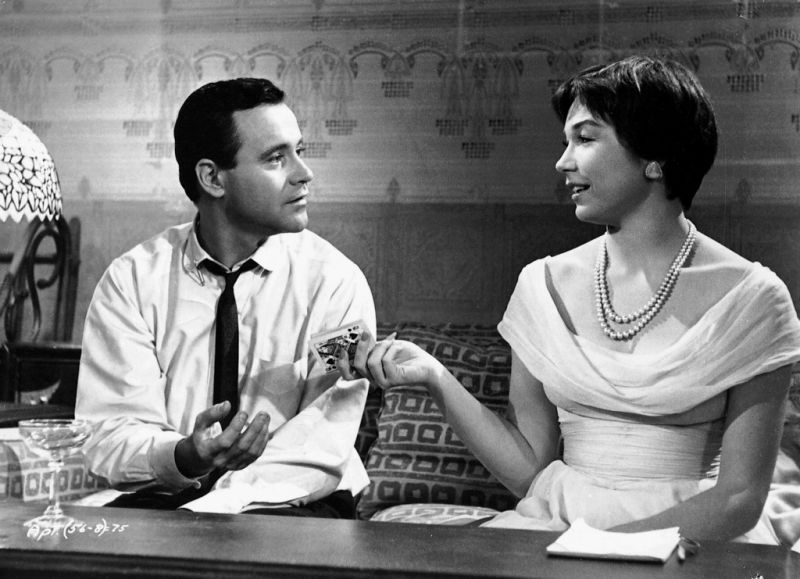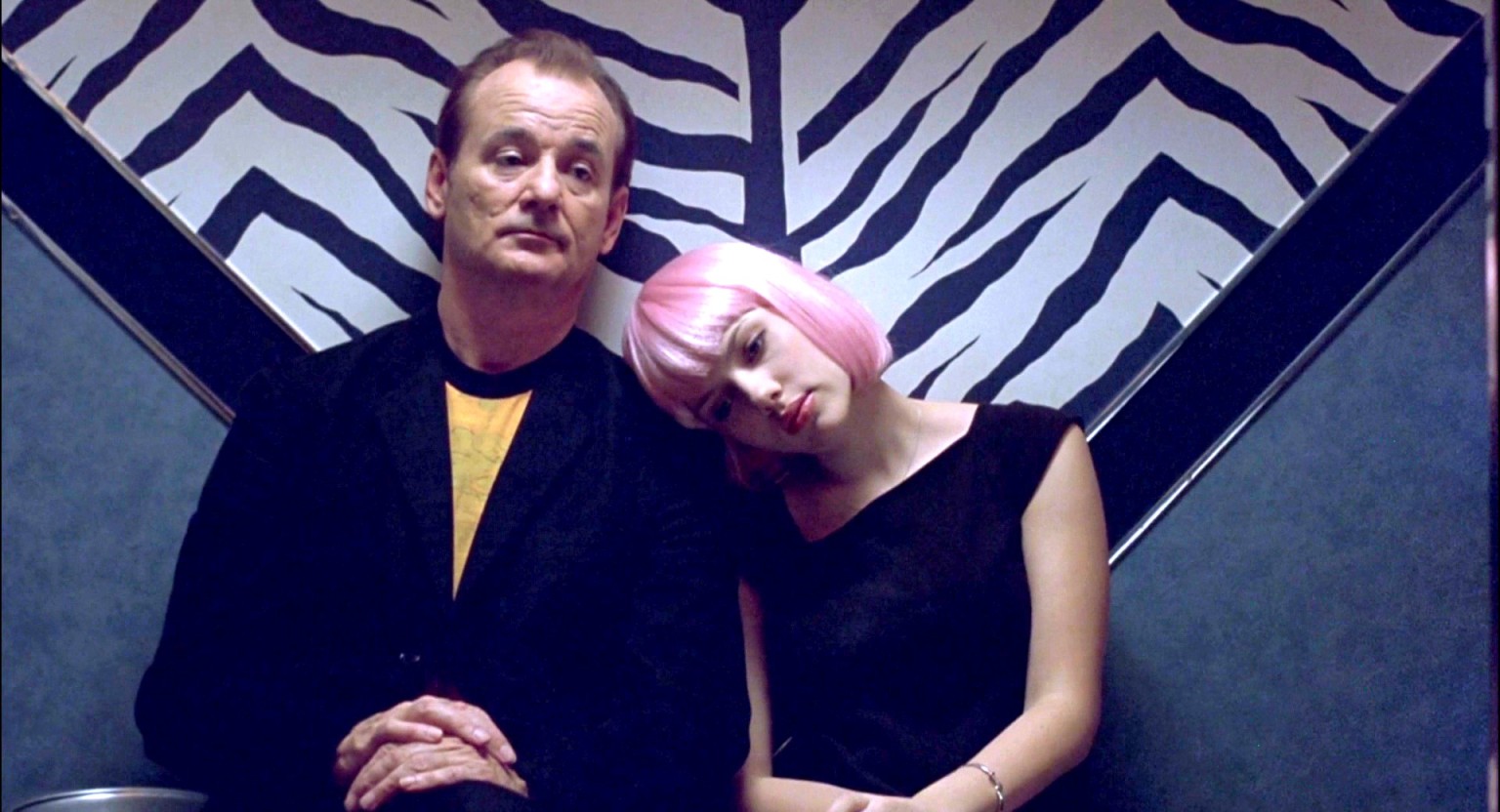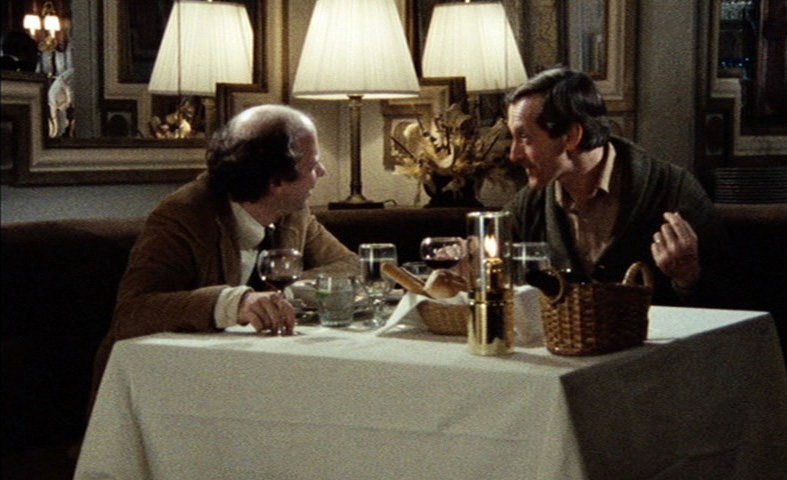5. The Apartment (1960) – Billy Wilder

Disguised as a romantic comedy on the surface, this film about Jack Lemmon’s Bud allowing his senior bosses to use his apartment for romantic affairs might be about that. However, the story is when his boss, Fred MacMurray, begins an affair with the elevator girl he admires, Shirley MacLaine’s Fran, bringing about his true self.
At first viewing, you do what Wilder expects from you: you laugh, cry, and feel for the characters. However, with each passing viewing, we see that the story from the beginning is a little sadder than it plays out to be.
A man stuck in a meaningless job who allows his bosses, whom he doesn’t like, to use his apartment to cheat on their wives. Or how a fragile girl can’t live the life she wants, so she has an affair with a man who doesn’t care for her. This is what makes Wilder’s film so tender and affectionate at the end of the film.
The film itself remains the same way as Wilder intended, but we see how desperate, relatable, and caring the characters of Lemmon and MacLaine really are. It’s just that over time, the real complex and messy attributes surface in this still delightful but more meaningful film.
4. Lost in Translation (2003) – Sofia Coppola

A middle-aged depressed actor and a lonely newlywed form a bond in the city of Tokyo. Viewers might think they know what they’re going to see, but after each new viewing, we move away from the young age of Scarlett Johansson’s Charlotte toward Bill Murray’s older Bob and see things a bit differently.
Coppola has spoken about juxtaposing these two characters at different times in their life as one of the starting points of the film. Therefore, trying to see the world and Tokyo here through Charlotte’s or Bob’s eyes is quite different, yet weirdly the same.
That’s why these two shared such a beautiful bond, and it’s through repeated viewings that we can alter our viewpoint and see the ageless way of seeing something foreign to us, whether it’s a foreign city or new relationship.
Coppola’s film is one of those rare, tender, and heartfelt films that strikes a shiver up your back as the Jesus and Mary Chain’s “Just Like Honey” plays and the credits roll. It’s only after that we start to think about how one can see things in their early 20s or mid-50s and share that connection.
3. Wild Strawberries (1957) – Ingmar Bergman

One of two masterpieces released in 1957, Victor Sjostrom plays Professor Isak Borg as he travels to receive an honorary lifetime achievement award in Bergman’s film on existentialism, introspection, and human existence.
From the beginning of Borg’s nightmare to the end of the film, we see his life unfold in dreams, memories, nightmares, and present-day encounters. Bergman’s closest on-screen collaborators are involved in little ways that allow Borg to have cathartic experiences.
Much of the film deals with Borg coming to terms with the regrets, failures, and mistakes in his life, which only reveals the present state of his isolated situation. Bergman’s films always need to be rewatched but here, we see the little details and moments that build up to Borg’s existence and parallel with his past life.
Bergman never shied away from grim subjects but with this film, despite much darkness and regret, we get a sense of joy and affirmation through the main character, it’s only after further viewings do we really start to see and understand why.
2. 8 1/2 (1963) – Federico Fellini

On the outside, everyone knows it’s Fellini’s eighth and one half film up to this point, and how could he follow up “La Dolce Vita”? Well, obviously, he turned the camera on himself and his muse stand-in Marcello Mastroianni to explore his creative block and the circus of his life around him. However, so much more came pouring out.
When one watches this film, it’s good to note that critics and scholars have argued all about the creative and filmmaking process, Fellini and his women, his childhood, his fantasies, his dreams, his memories, Italian society as a whole, Catholicism, Freudism, sexuality, modernization, and the list goes on. Why? Because it’s all of the above and more that are far too many to mention. After each viewing, we see the way Fellini sees or Guido or vice versa; we make parallels between his life the world and even ours.
When watching and experiencing the film, we seem to always miss something in the connection and what it’s all about. Therefore, we continually go back and rewatch this cinematic and artistic masterpiece that continues to inspire, perplex, and invigorate cinephiles.
1. My Dinner With Andre (1981) – Louis Malle

How could a film where 100 of its 111 minutes are at a dinner table not seem dull for a single solitary second? Well, its writers and actors Wallace Shawn and Andre Gregory succeed as they bring their story and loosely-based approach to the screen by Malle.
The film’s conversation spans everything and anything, from the nature of plays, travel stories, existentialism, living in New York, and the simple pleasure of life. But what makes each new viewing almost revelatory and revealing to our true selves is that we change sides between Andre’s and Wally’s views of life.
Maybe we sided with Andre’s stories of living and acting in a theatre group in the dense Polish forest, and that was the life we strived or wished for at one point in our lives. On the other hand, we have Wally’s comfortable life in New York as a struggling writer who enjoys his warm blanket on a cold night, and now we side with him.
There are hundreds of topics these two converse about in the second act of the film, but as the years go by, we can change viewpoints with Andre or Wally, proving that the film itself doesn’t change but we change, which makes us see the characters’ viewpoints a little differently than our own.